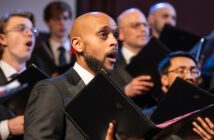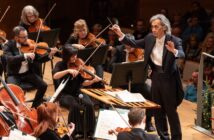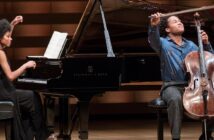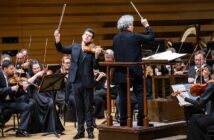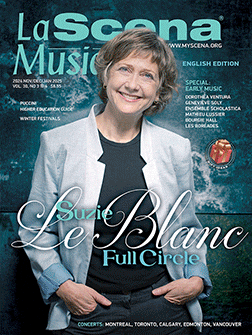
This page is also available in / Cette page est également disponible en:
![]() Francais (French)
Francais (French)
“St. Philip knew…closed churches, abandoned marketplaces, widespread anxiety and uncertainty, and the suffering experienced by the sick and dying.”
By Aaron James
The Toronto Oratory
In the midst of the present COVID-19 crisis, many Catholics have been inspired to rediscover ancient prayers against disease. During the centuries-long struggle against the bubonic plague in Europe, prayers for plague victims were a regular part of the Church’s life, and many texts interceding for plague victims were set to music.
Remi Chiu’s timely book Plague and Music in the Renaissance describes many of these compositions and places them in their intellectual context, reminding us of the widespread contemporary belief in the ability of music to promote wholeness and healing, an inheritance from Plato. Musical pieces for the plague included motets, madrigals, and laude in honour of St. Roch and St. Sebastian, as well as a well-known sequence Stella caeli extirpavit. The Stella caeli sequence, probably composed in the early decades of the 15th century, invokes Mary as a healer whose motherhood of Christ cured the plague of original sin, and asks her intercession for those suffering from physical disease.
Many old missals contain a special Mass formulary interceding for victims of plague, created by order of the Avignon pope Clement VI during the height of the plague in the mid-14th century. That Mass opens with the following Introit:
Recordare, Domine, testamenti tui et dic angelo percutienti: Cesset jam manus tua, ut non desoletur terra. Quiescat Domine jam ira tua a populo tuo, et a civitate sancta tua, ut non desoletur terra.
(Remember your testament, O Lord, and say to the persecuting angel: stay your hand, that the earth not be made desolate. Let your anger cease from your people, O Lord, and from your holy city, that the earth not be made desolate.)
This Introit text was set to music by many early modern composers in response to the outbreaks of plague that appeared periodically throughout Europe. One of the hardest-hit cities was Florence; historians estimate that a third to half of Florentines died in the plague outbreak of 1347-48, and the city would continue to be struck by recurring waves of the disease for the next three centuries. A particularly damaging decade was the 1520s: a new outbreak of plague emerged in 1527, crippling a city already torn by political strife between supporters and opponents of the ruling Medici family. Niccolo Machiavelli describes the scene:
The shops are locked, the businesses closed, the courts and the lawyers dragged away, prostrating the laws. Now one hears of this theft, now of that murder: the piazzas and markets, where the citizens used to be in the habit of gathering frequently, are now made into communal graves and vile dens of thieves. Men go about alone, and in exchange for friends, one meets people infected with this deadly plague. Even if one parent finds the other, or a brother finds his brother, or a wife her husband, each one keeps a safe distance from their relations, and what is worse? Fathers and mothers spurn their own children, abandoning them.
Two musical settings of the Recordare Domine introit survive from composers active in Florence during this time: Philippe Verdelot and Jacques Arcadelt. Both pieces are scored for five parts using lower voices only, creating a suitably dark and foreboding sound for this heartfelt text. The version of Recordare by Verdelot contains a second text sung simultaneously: while four of the voices sing the well-known introit text, a fifth voice sings Parce Domine, populo tuo, quia pius es et misericors; exaudi nos in aeternum Domine (Spare your people, O Lord, for you are loving and merciful: hear us forever, O Lord). This text and music are a quotation from an earlier motet by Jacob Obrecht, who had himself died in an outbreak of the plague in 1505. Verdelot’s piece is thus simultaneously a musical tribute to an earlier victim of the plague and a prayer for present-day victims of the same disease – possibly including Verdelot himself. The choir of the cathedral in Florence dissolved in the midst of the 1527 plague outbreak, leaving Verdelot without work, and there are no further records of his life.
These Florentine plague motets are known today through a manuscript collection of motets now found in the Biblioteca Vallicelliana, the library of the Oratory in Rome. This manuscript seems to have been copied in Florence around 1530, and contains a repertory of motets by the most popular composers of the time: Verdelot, Arcadelt, Willaert, Jacquet of Mantua, Lheritier, Festa, and Josquin des Prez. Although the collection contains motets on a mixture of different subjects, there are numerous penitential texts alluding to the traumatic events of the 1520s, which came to a head in 1529 when the city was besieged and sacked by imperial soldiers fighting on behalf of the Medici family.
Motets like Jacquet’s Aspice Domine and Festa’s Deus venerunt gentes describe the Biblical destruction of Jerusalem in terms that would have reminded Florentines of their own destroyed city; Arcadelt’s Congregati sunt inimici describes a people surrounded by hostile enemies; and Verdelot’s Infirmitatem nostram asks God’s protection on behalf of a people beset by numerous ills. By way of emphasizing his point, Verdelot quotes the tune of the well-known French song Fors seulement, whose agonized text leaves no doubt about the seriousness of the city’s predicament: “Save only in waiting for death, there remains in my weary heart no hope. . .”
Costanzo Festa contributed a motet to the collection that addresses the Florentine people directly, urging them to repent: Florentia tempus est poenitentiae. Non vides caeca non audis surda quod ingrata iudicaris quod insana videris. (Florence, it is time to repent. In your blindness you do not see, and in your deafness you do not hear, that you are judged ungrateful, that you are seen to be insane.) The motet features the refrain Florentia convertere ad Dominum Deum tuum (Florence, return to the Lord your God), an adaptation of the Lamentations traditionally sung during Holy Week.
The forbidding tone of this text is akin to that of the Dominican friar Girolamo Savonarola, whose fiery, apocalyptic preaching had urged an earlier generation of Florentines to repentance; Savonarola himself was executed in 1498, but he had many followers and his influence was still powerful in the Florence of the early 1520s. Indeed, the Vallicelliana motet manuscript contains many musical works on characteristically “Savonarolan” themes: there is even a caricature-portrait of Savonarola drawn in the margins of the manuscript, next to a musical setting of one of the famous friar’s favourite psalms (In te Domine speravi, Psalm 69).
How did this collection of Florentine motets for a time of plague make it to Rome? The library where it now resides was founded by St. Philip Neri himself, who made that exact trip from Florence to Rome in 1533. Born in 1515, he would have been old enough to remember the troubles of the late 1520s, and he was widely noted as a devotee of Savonarola, although Philip’s own ingratiating manner had little in common with the Dominican’s fiery rhetoric. It is tempting to imagine that St. Philip brought the collection of motets with him to Rome, and that it represented the beginning of the Oratory’s future music library – soon to be enlarged with works by later Roman composers like Victoria, Palestrina and Animuccia.
There is, of course, no evidence to prove this one way or the other. What can be known for certain, however, is that St. Philip knew through personal experience the upheaval caused by a pandemic: closed churches, abandoned marketplaces, widespread anxiety and uncertainty, and the suffering experienced by the sick and dying. We can imagine the saint paging through a motet collection like the one in the Biblioteca Vallicelliana, recognizing the popular composers of his youth like Arcadelt, Jacquet, and Verdelot, and remembering the tumultuous history that is evoked in their works. For those of us experiencing the effects of today’s pandemics, then, the music of the time can be a great comfort, and St. Philip a powerful intercessor.
Aaron James is the Director of Music for the Oratory of St. Philip Neri, Toronto, and a sessional lecturer in organ at the University of Toronto. He is a graduate of the Eastman School of Music, where he completed the PhD in historical musicology as well as the DMA and Performer’s Certificate in Organ. He is currently transcribing the complete contents of the Vallicelliana partbooks for a series of performances after the end of the COVID-19 outbreak.
This article originally appeared on the website of The Toronto Oratory.
This page is also available in / Cette page est également disponible en:
![]() Francais (French)
Francais (French)








